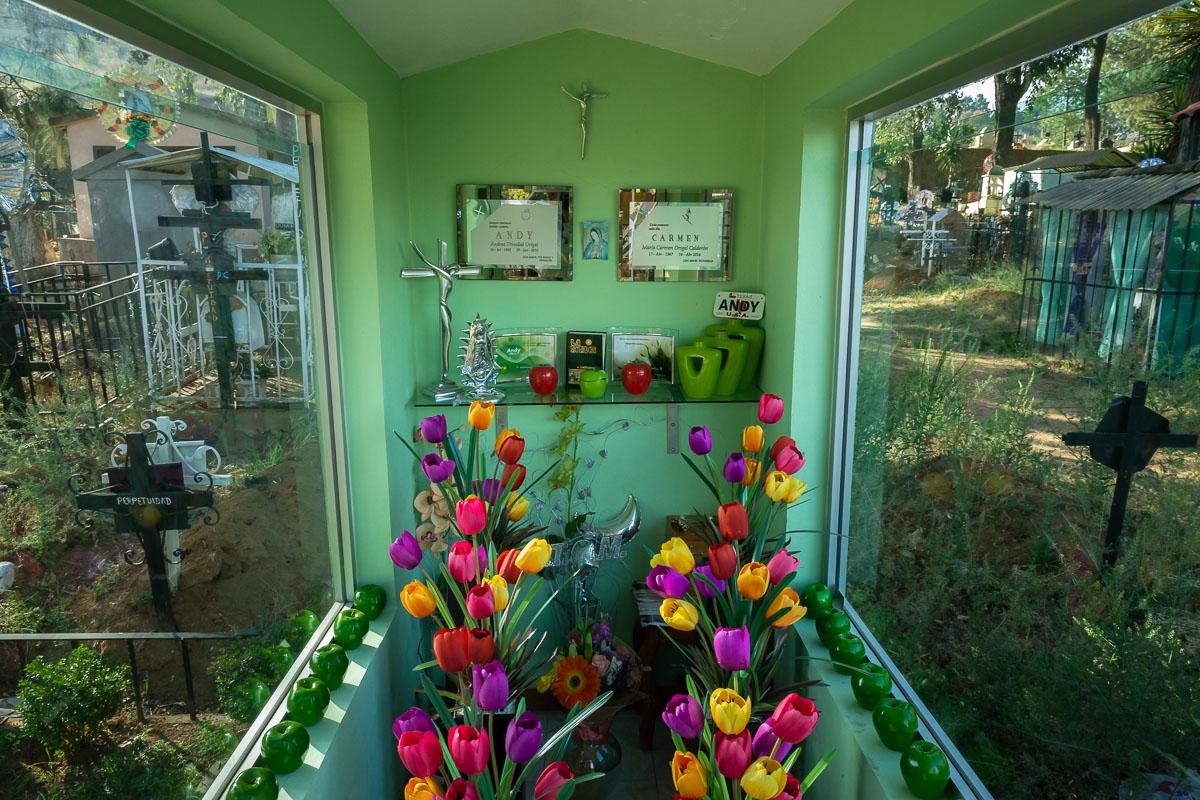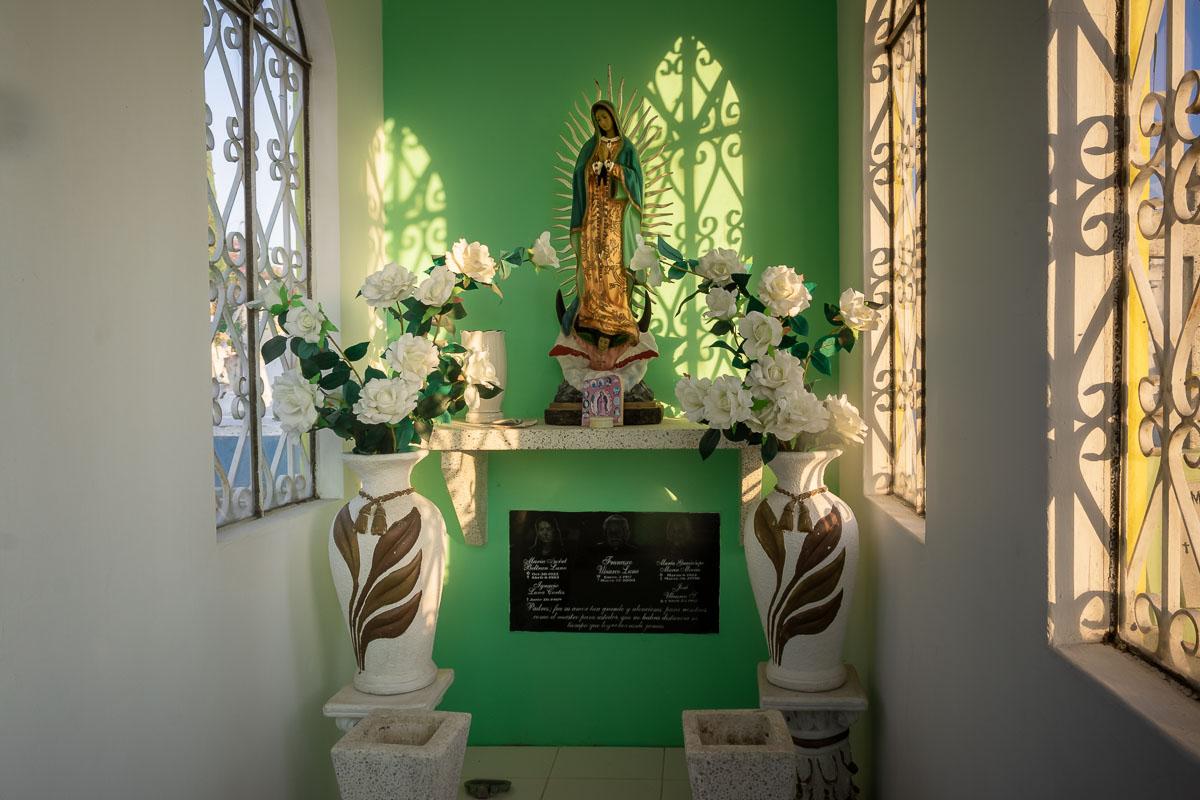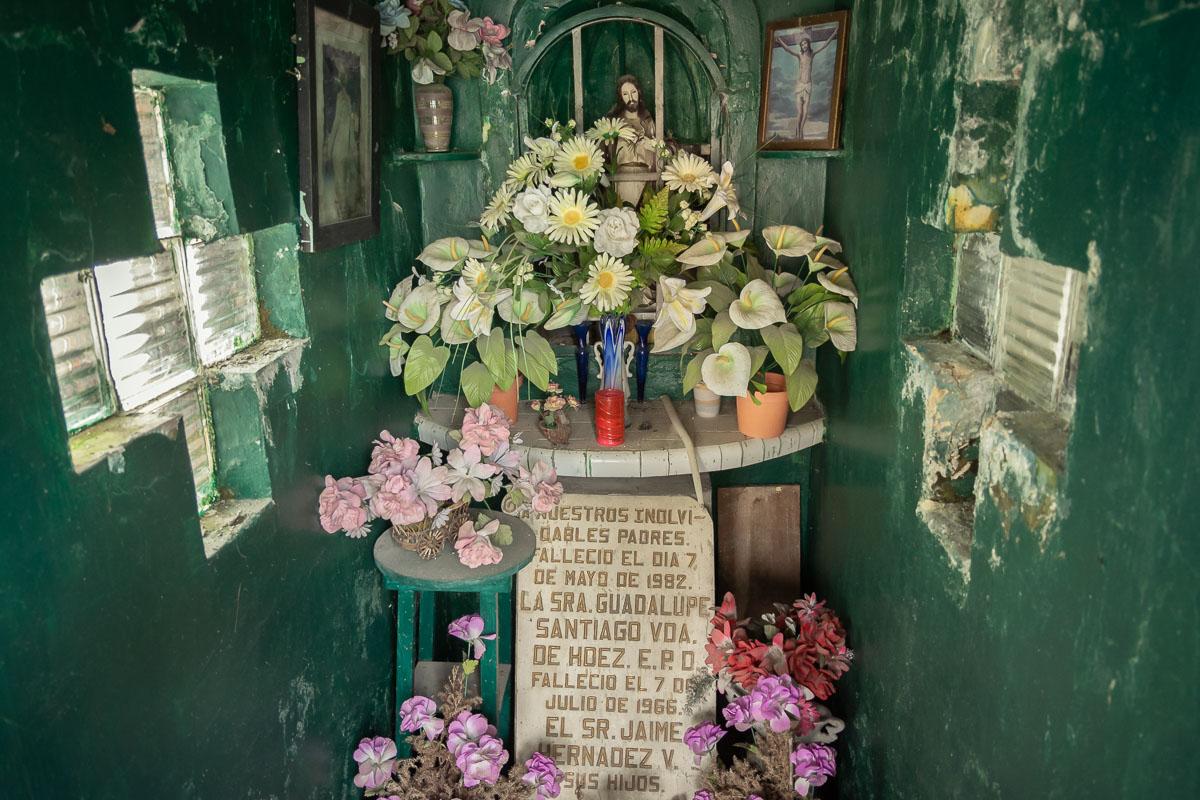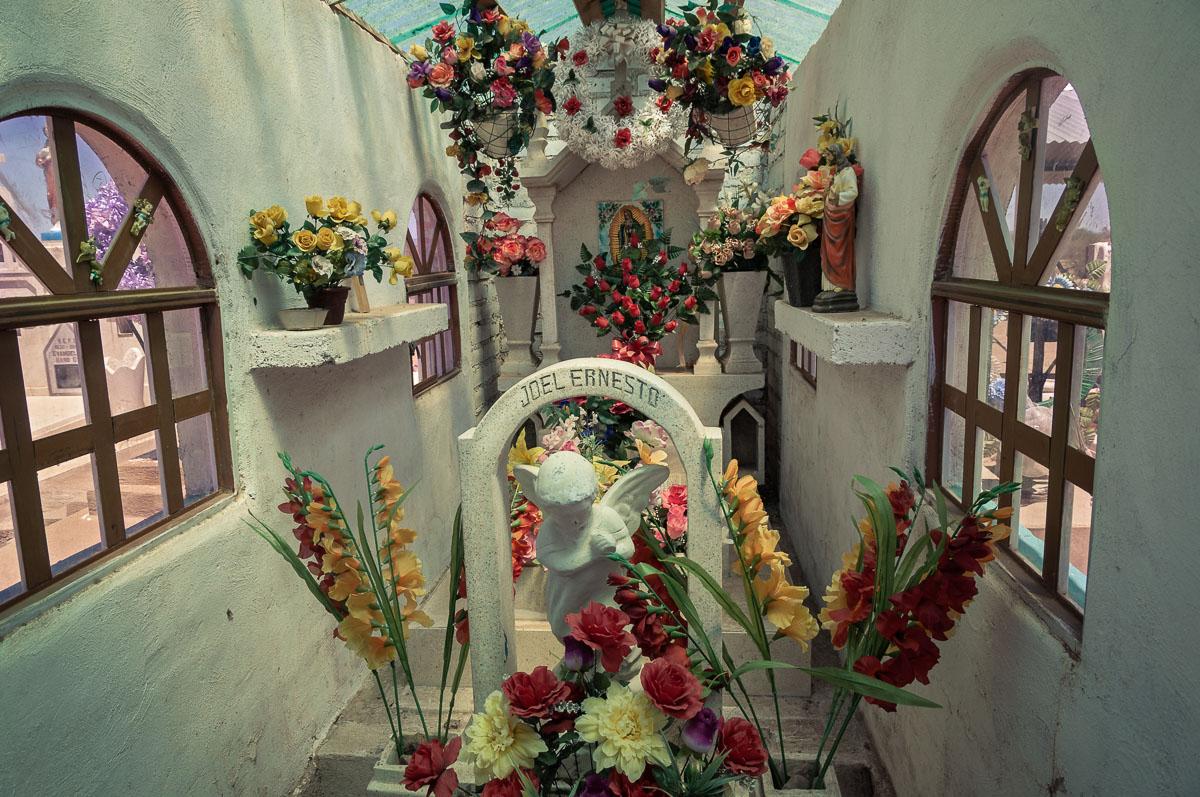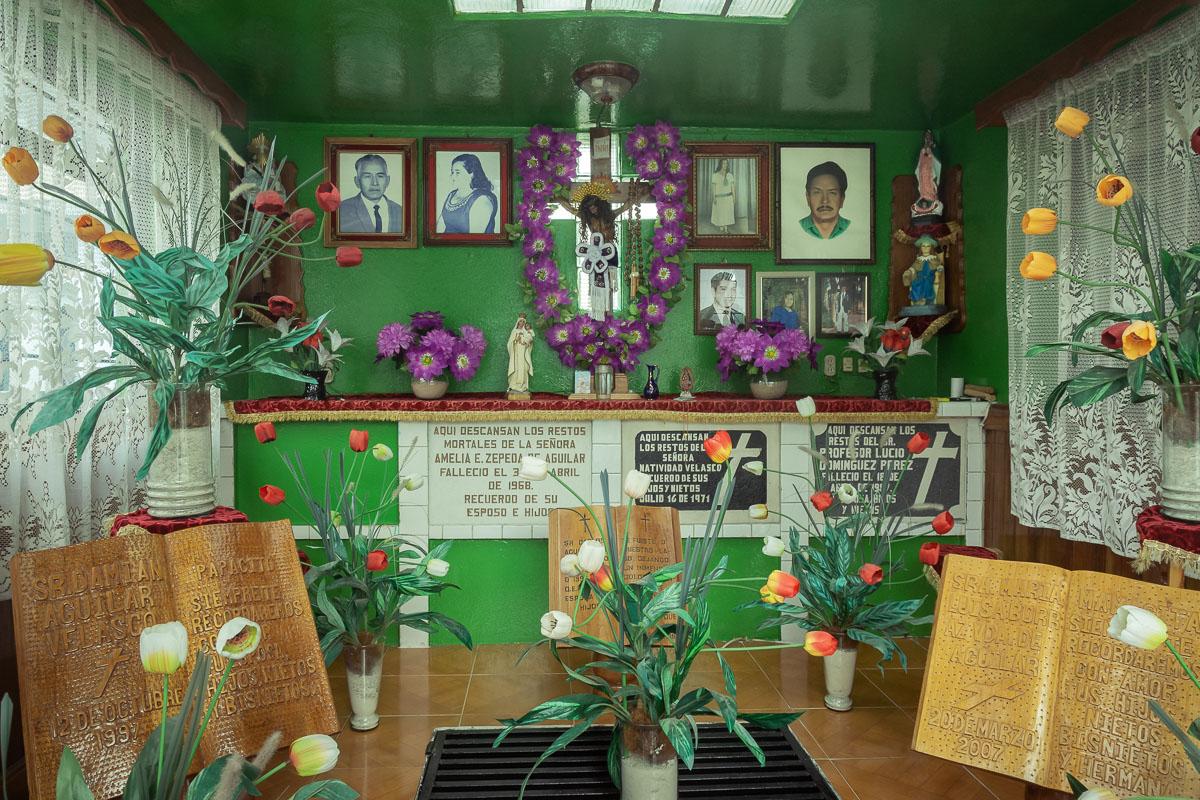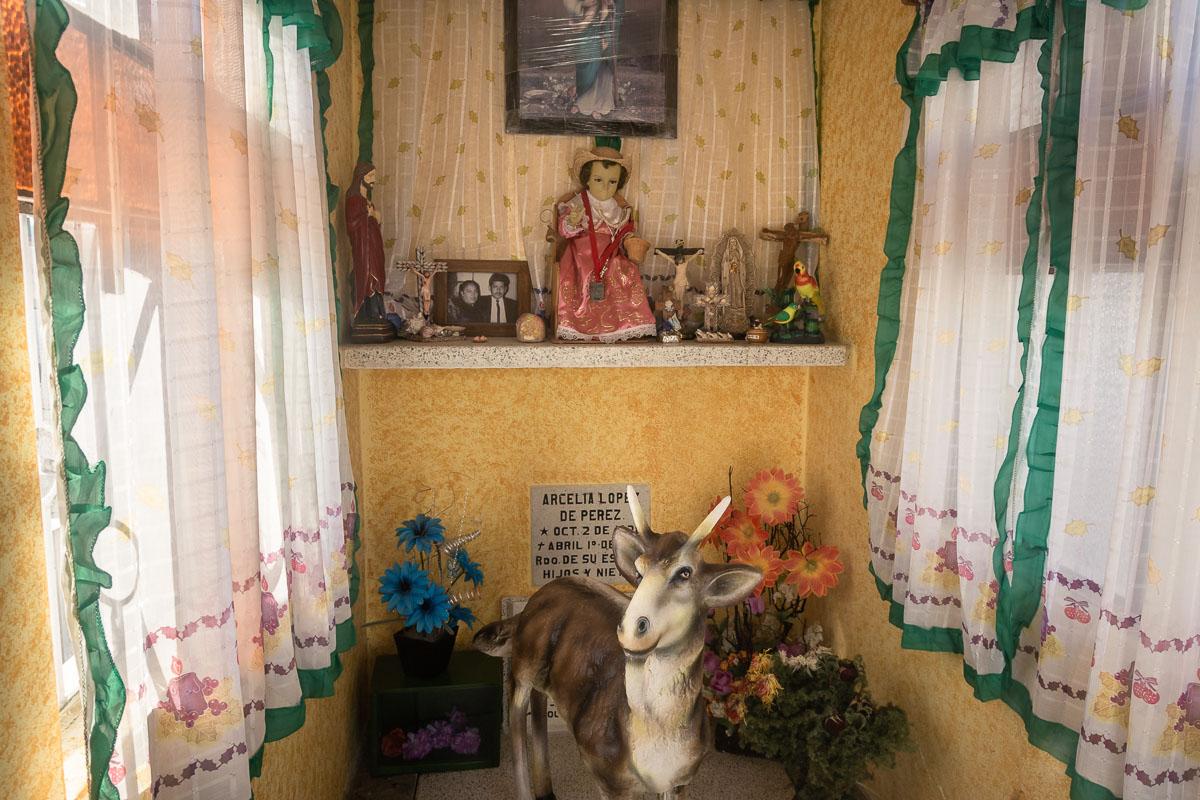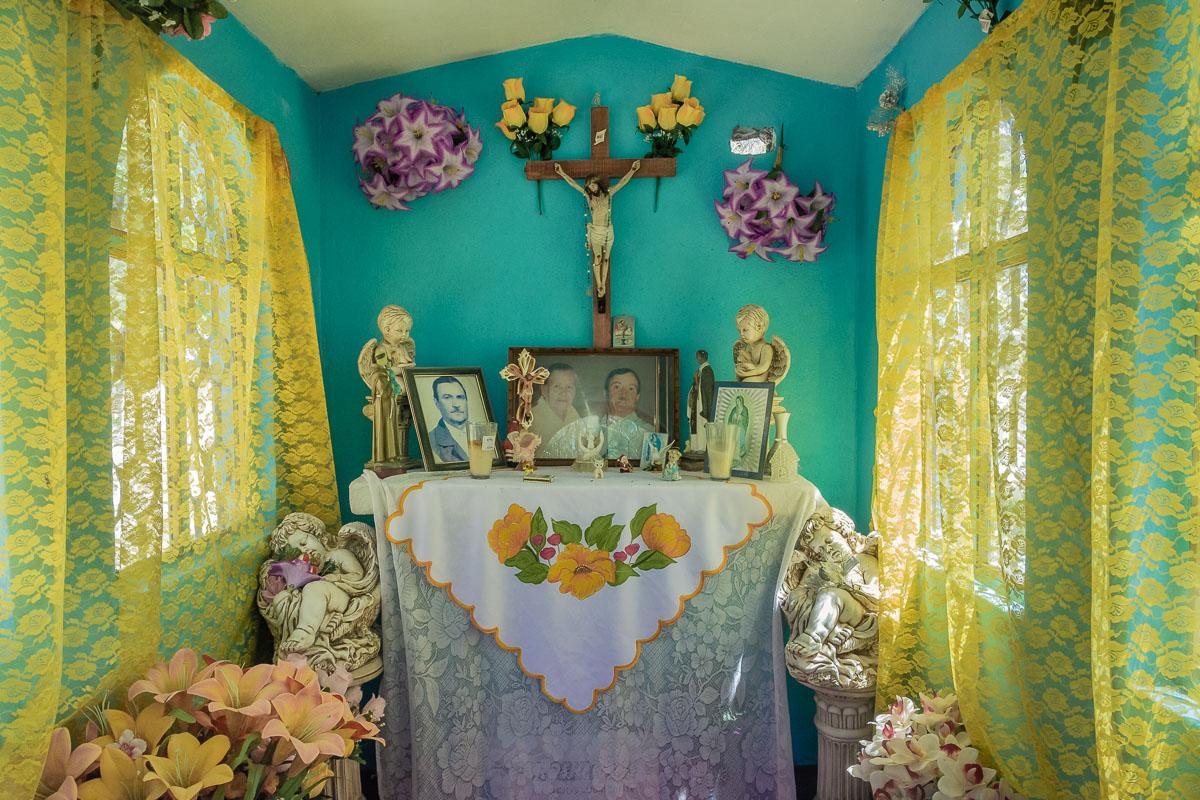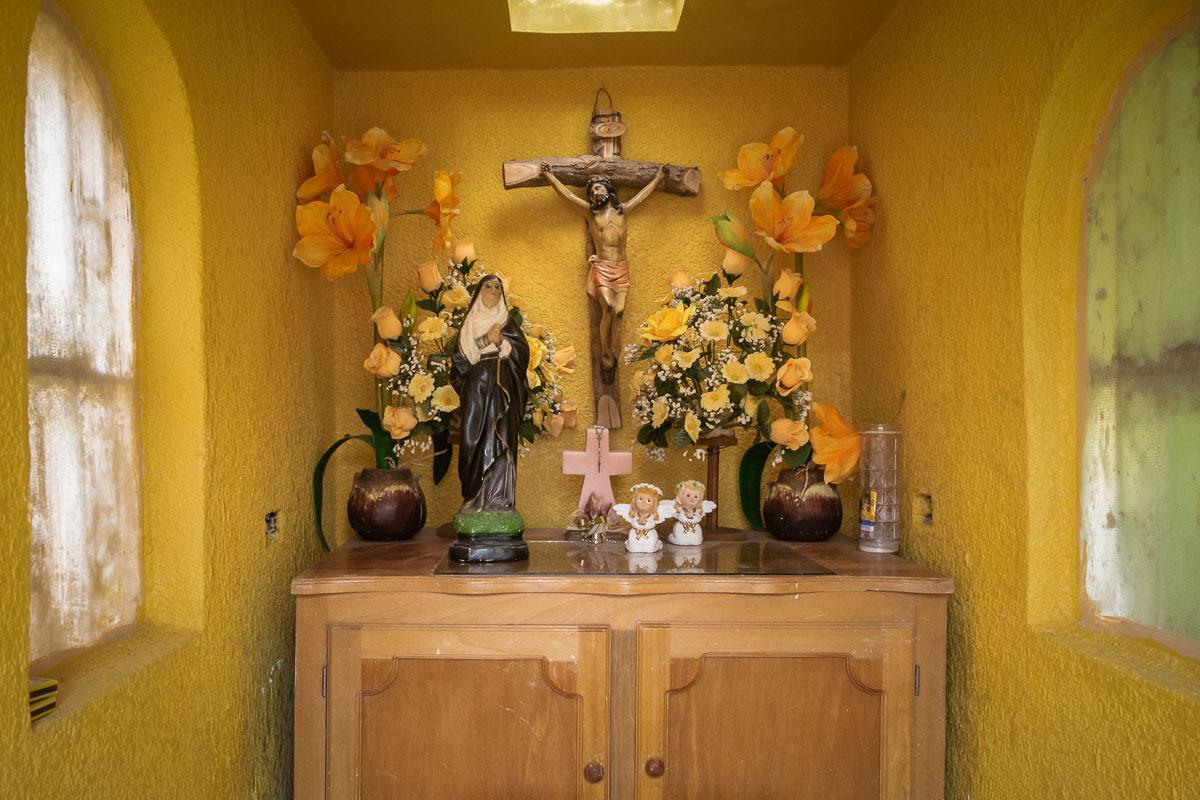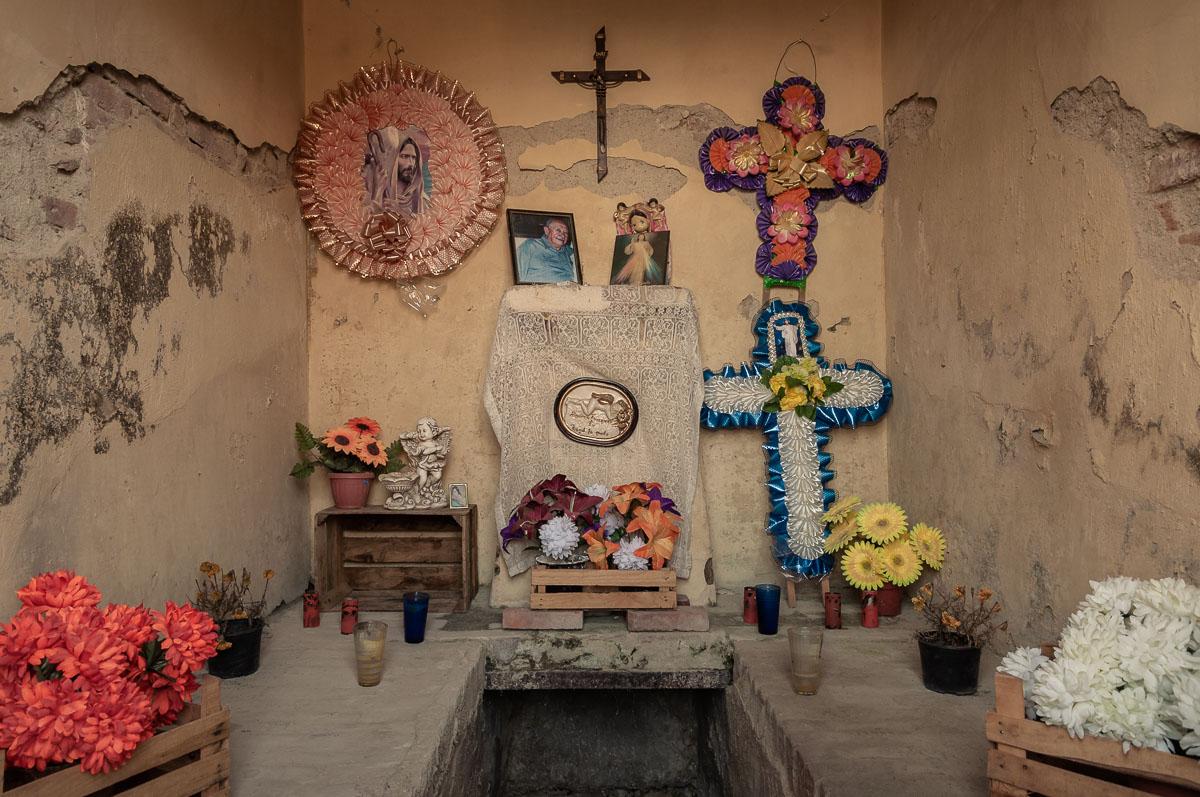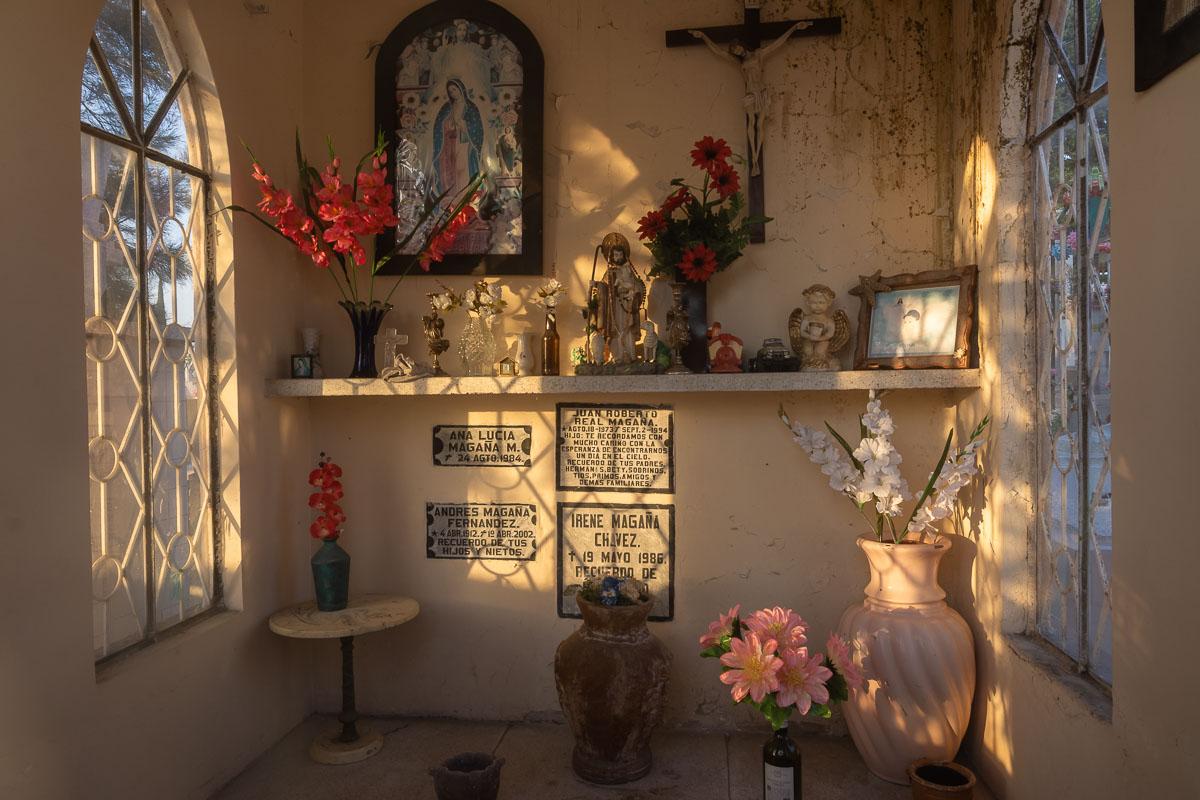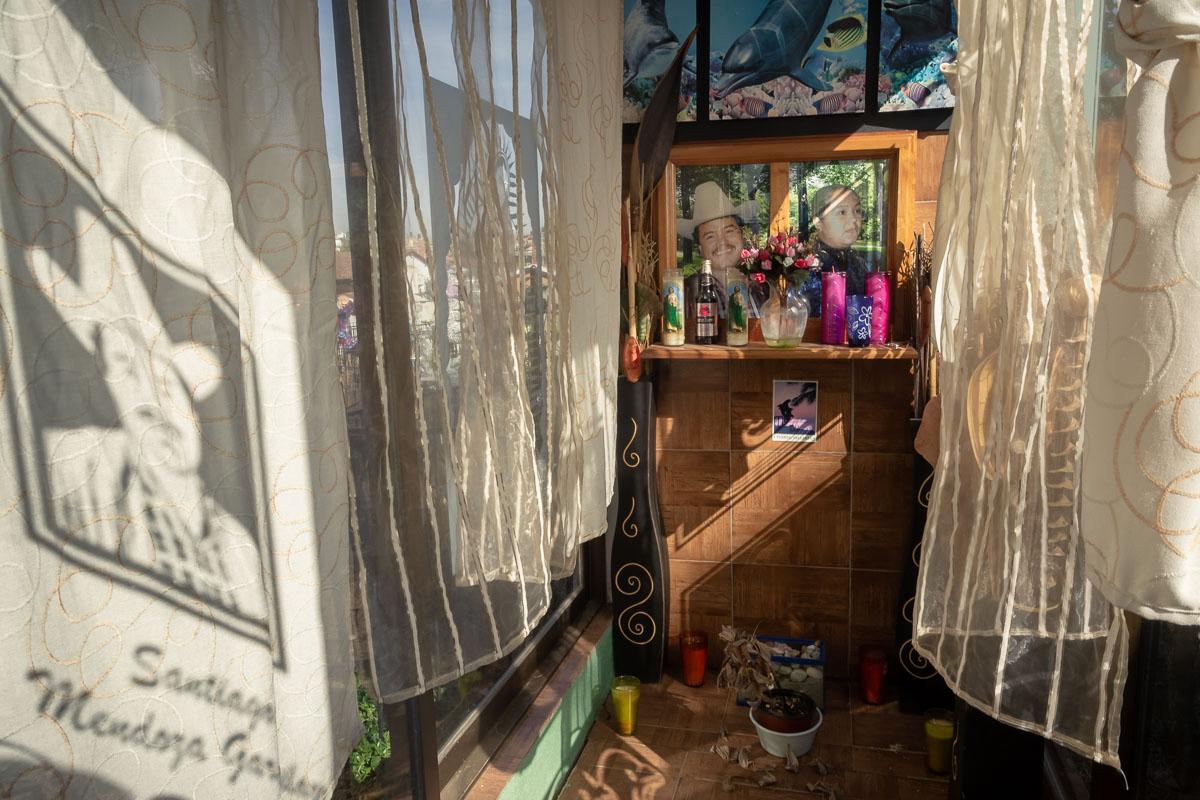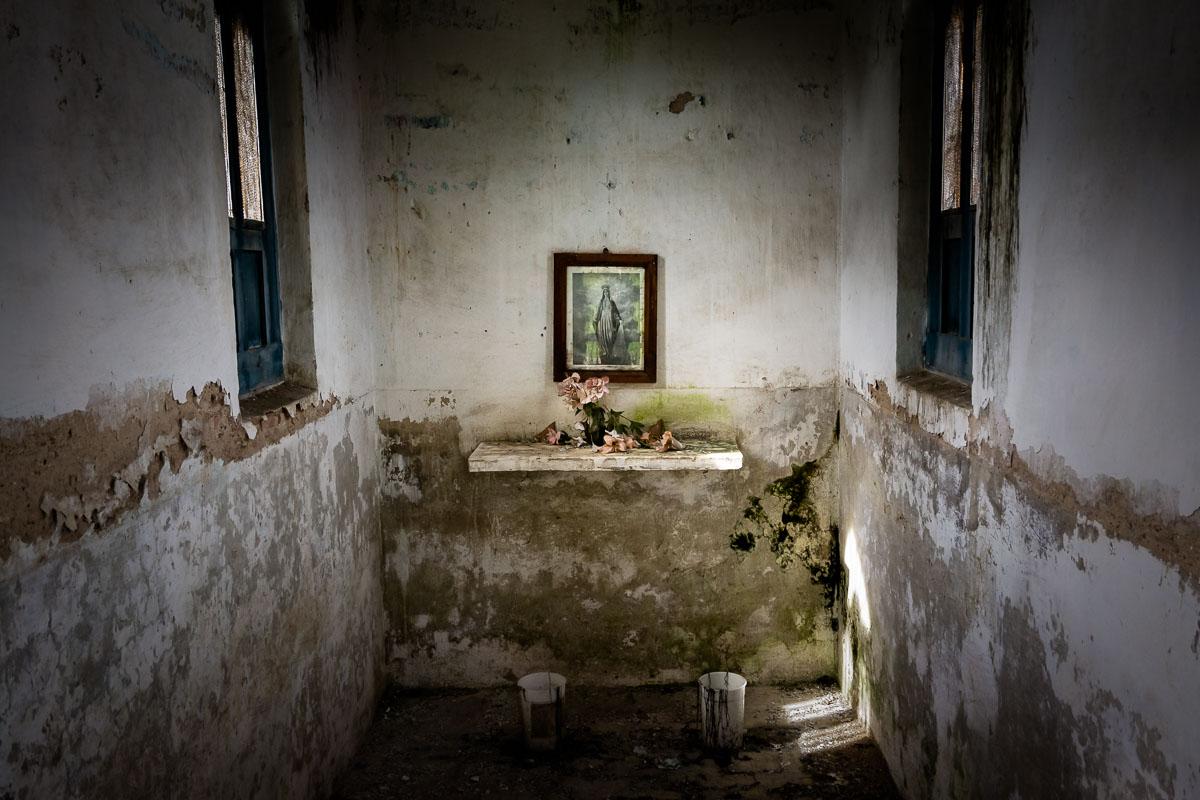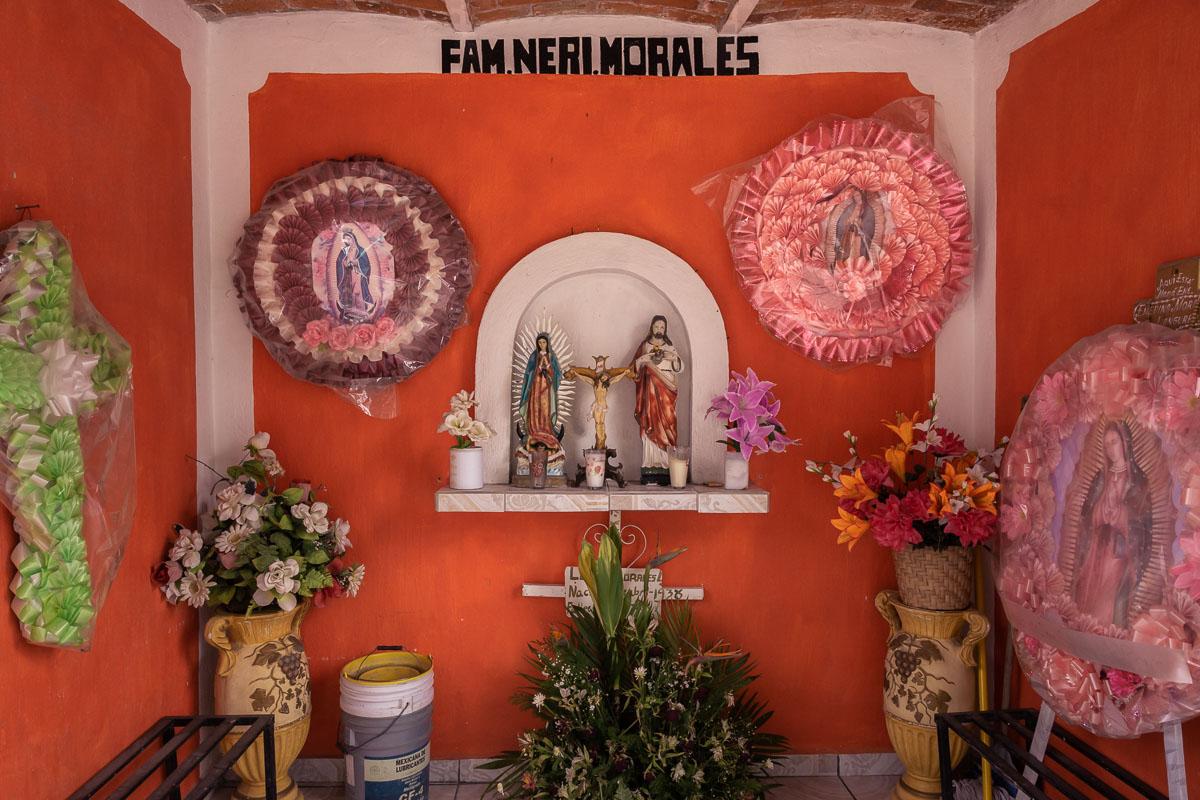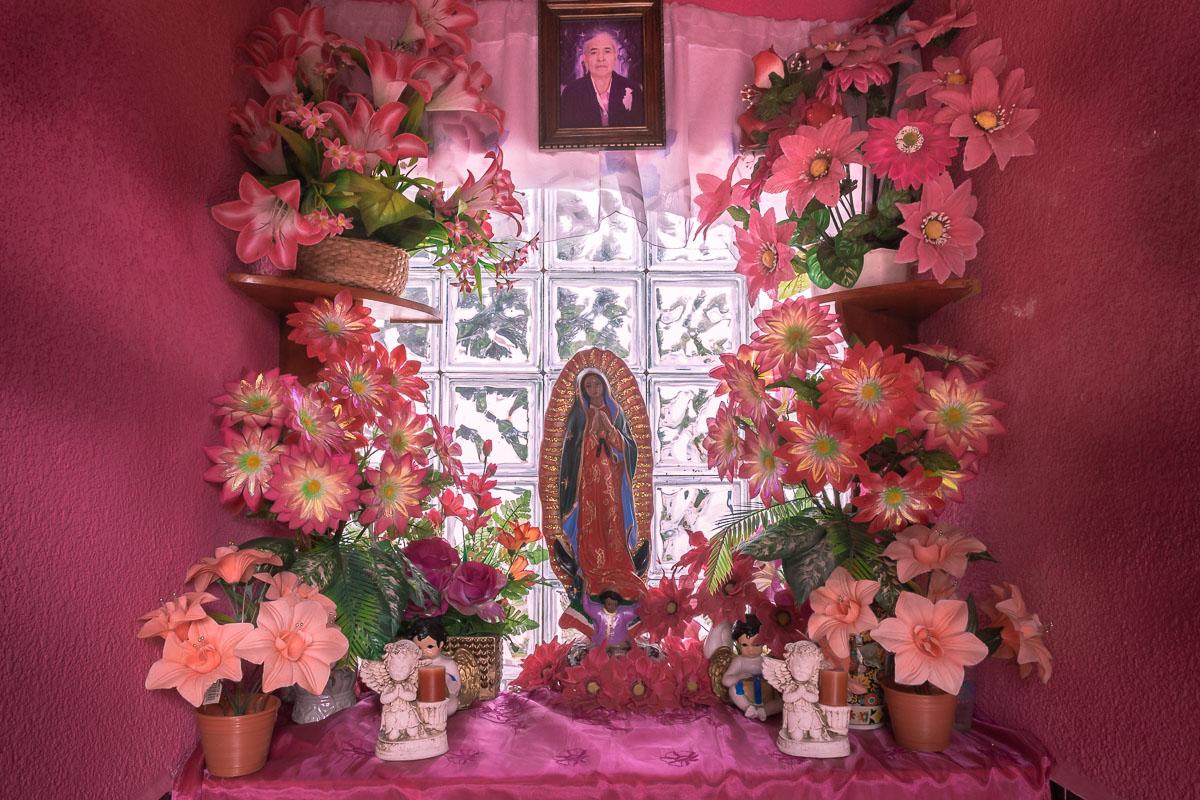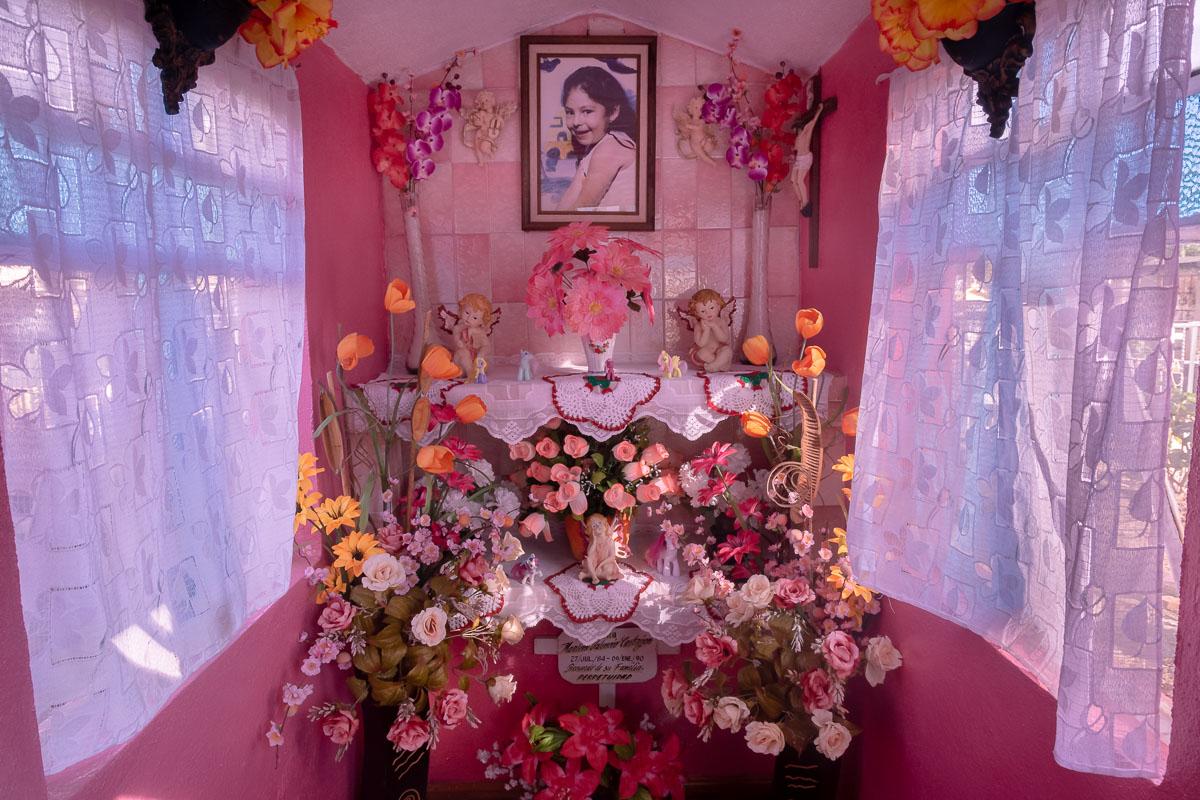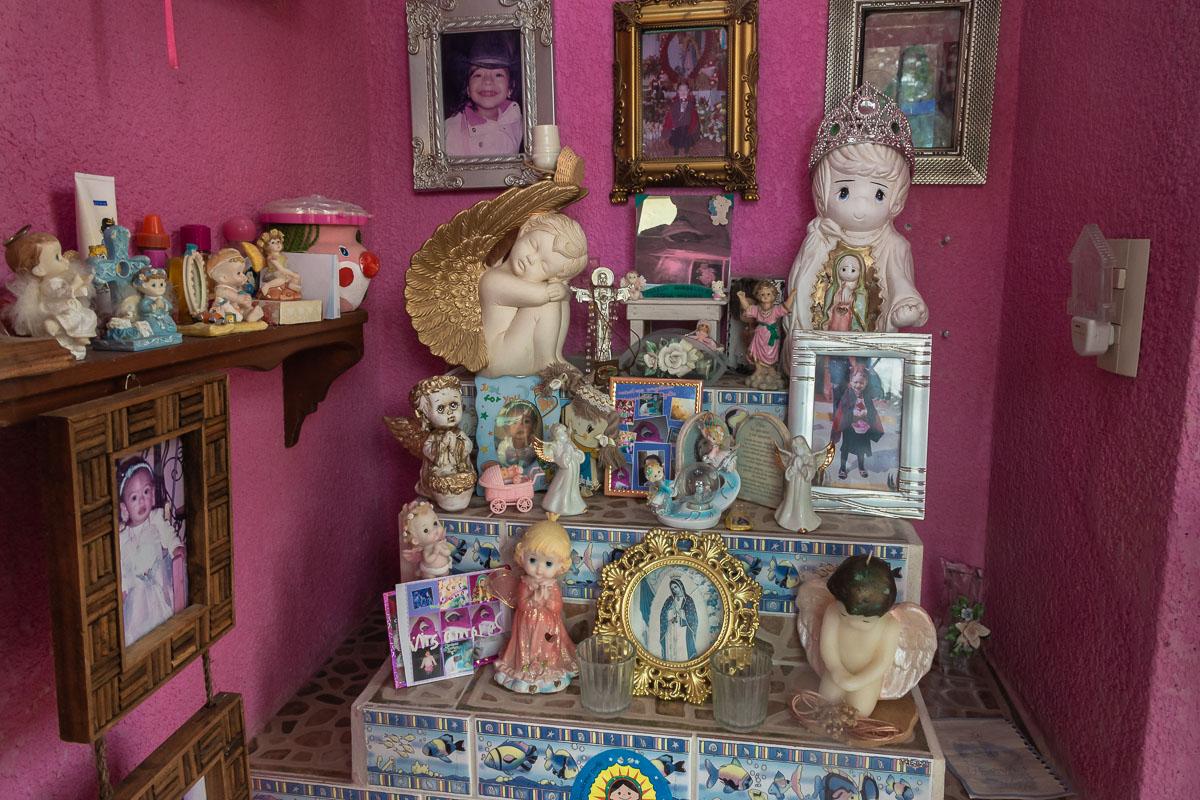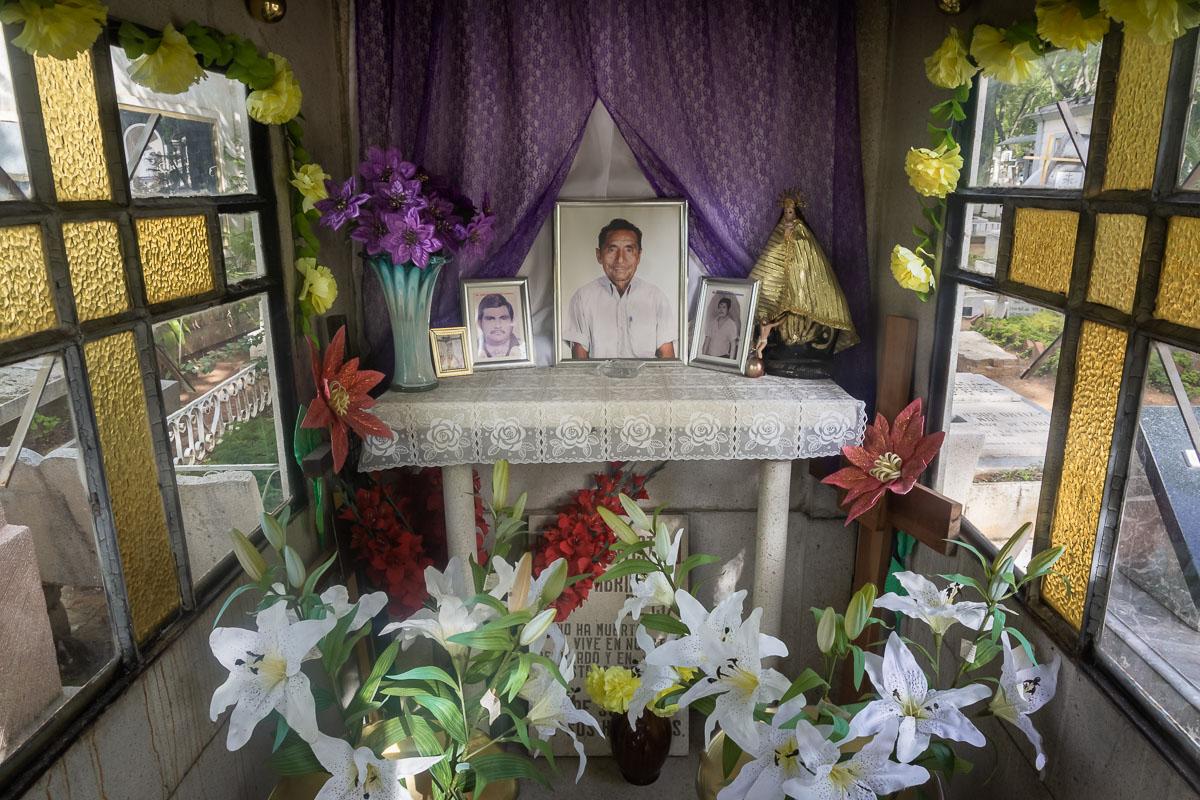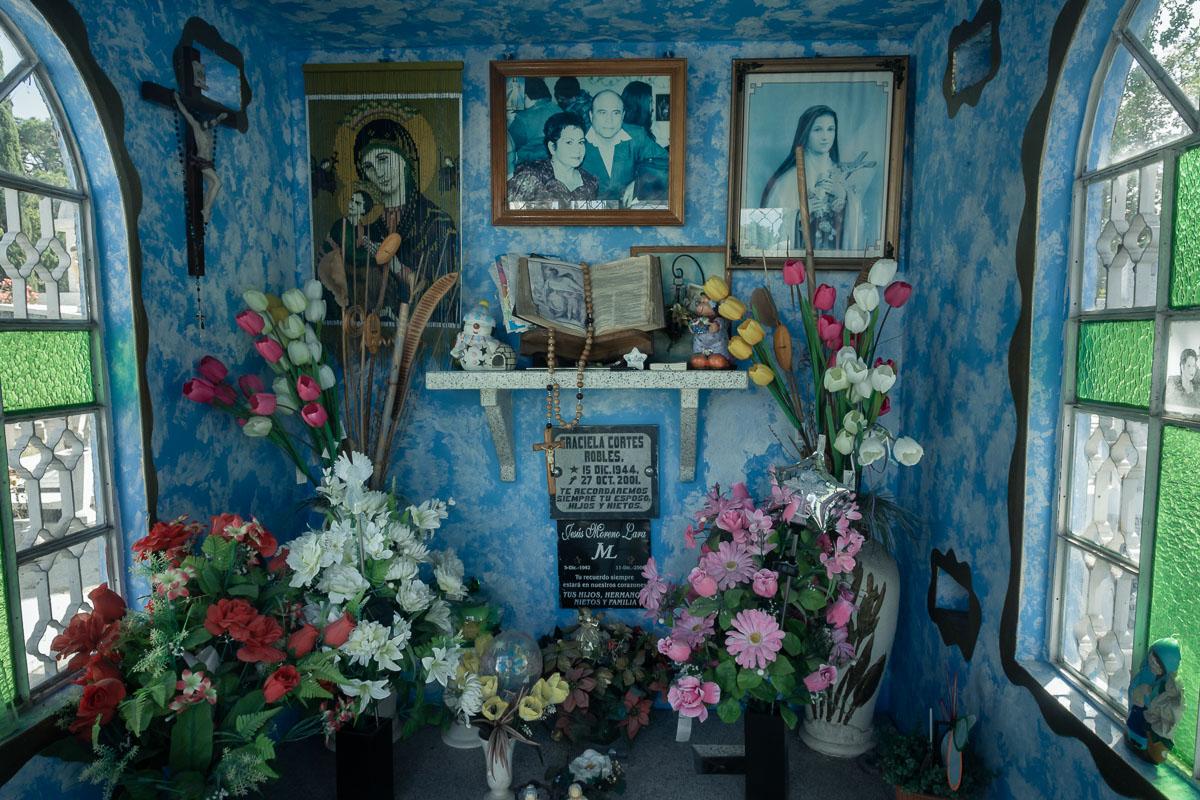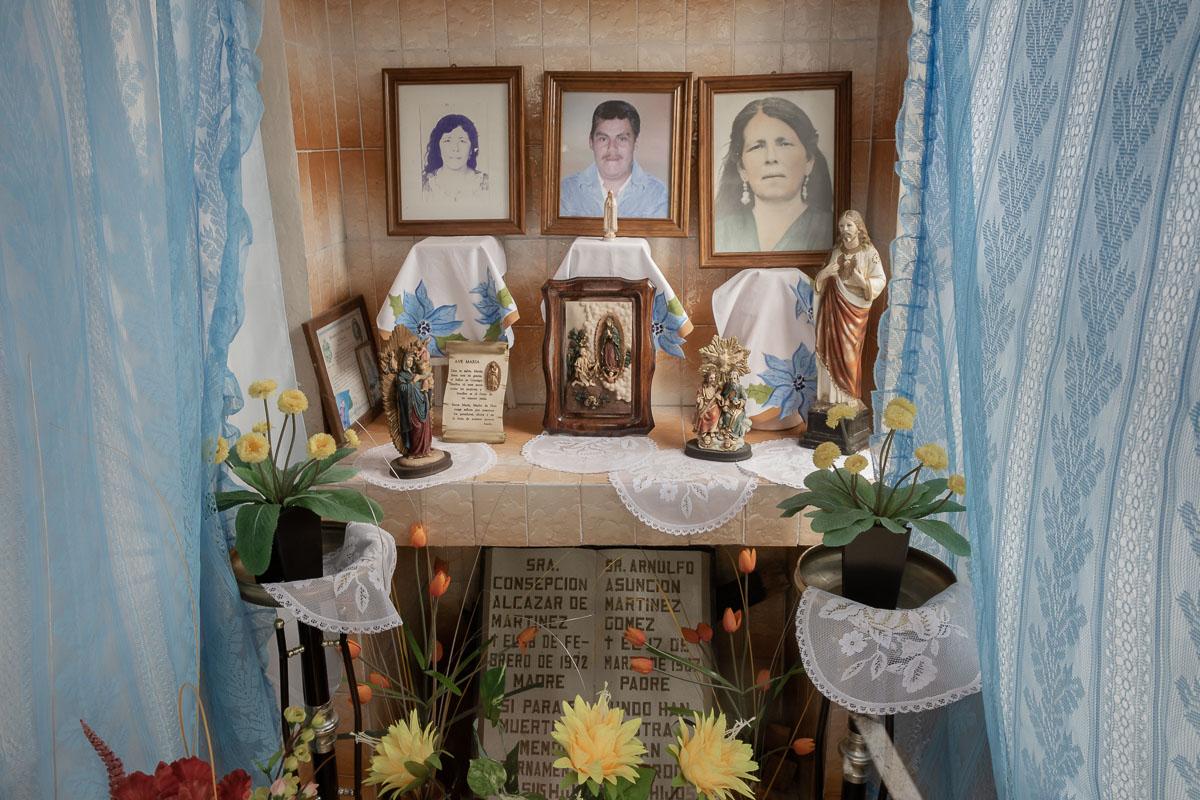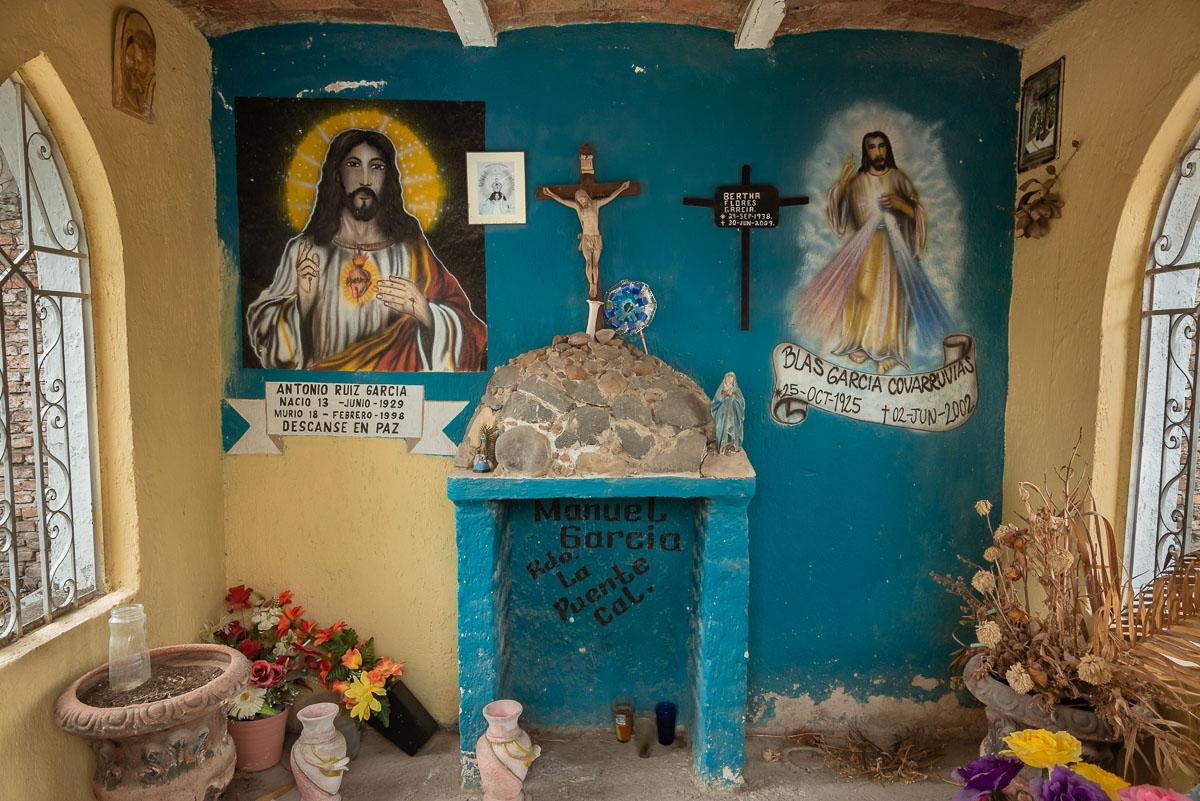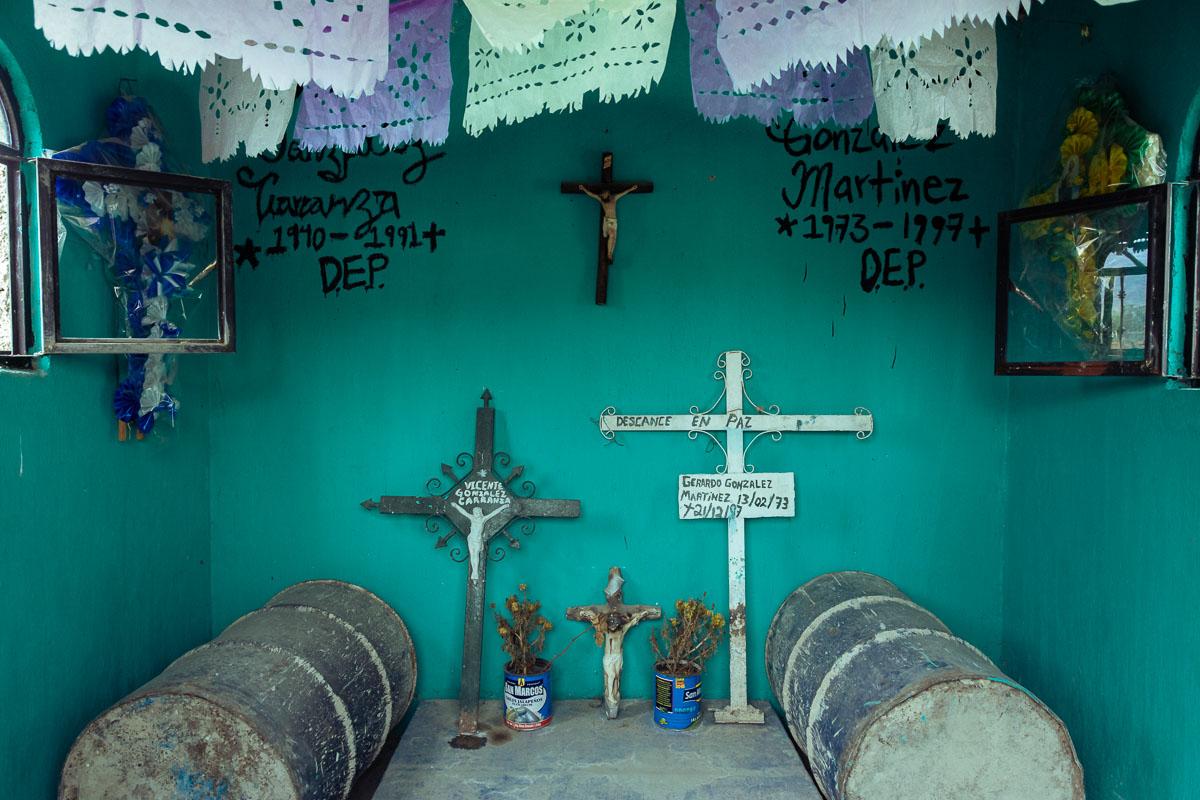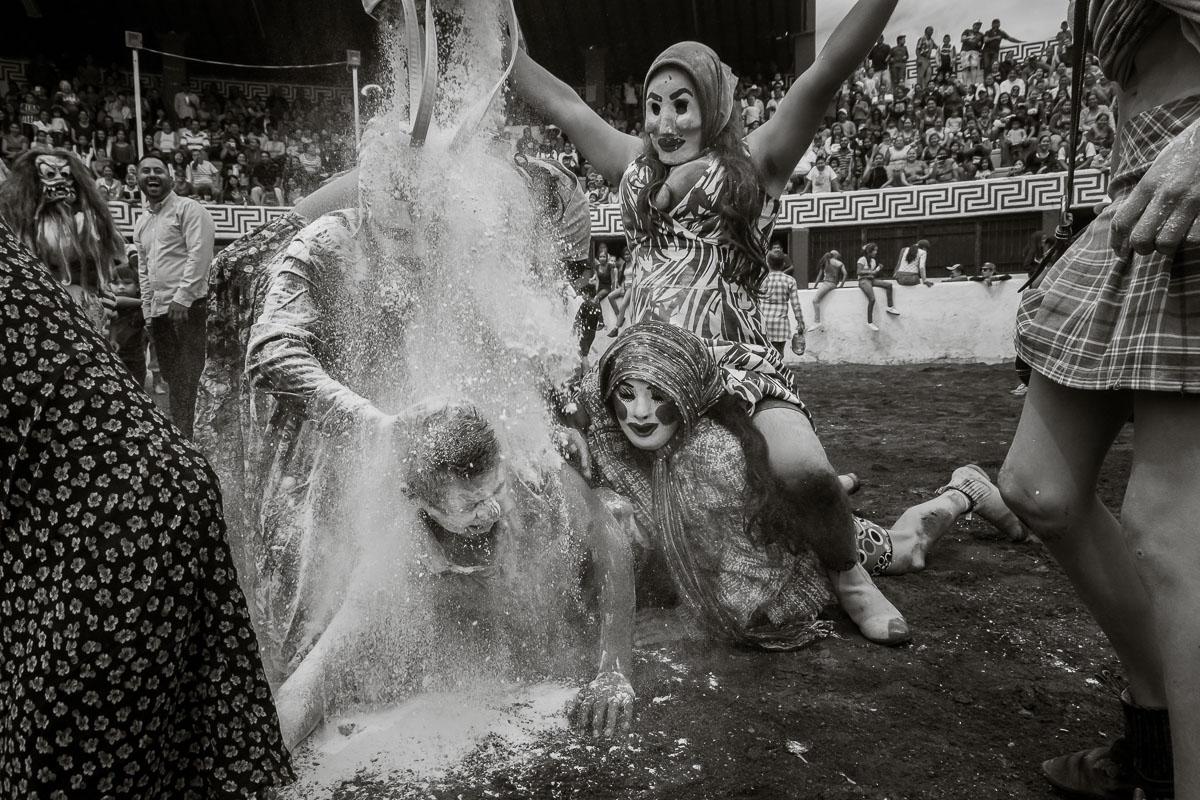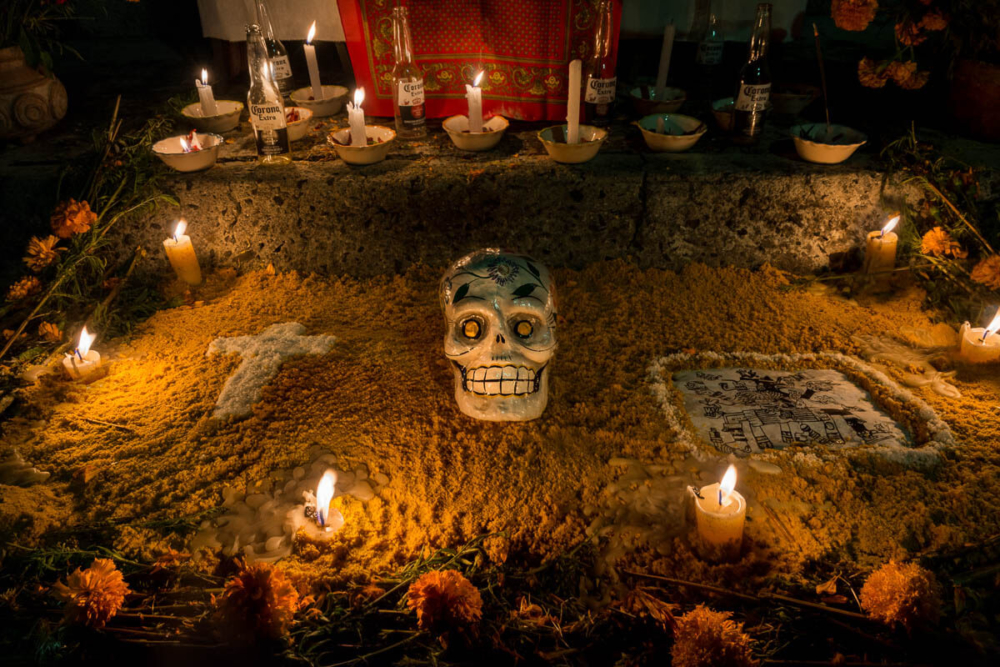Inside the Graveyard Mausoleums of Mexico
In Mexico, the dead might be gone, but they are rarely forgotten. A three-day national holiday, Día de Muertos, exists just to remember them and welcome them back to the world of the living each year. And as cremation is not common here, there are thousands of cemeteries crammed with an interlocking jigsaw of graves, tombstones and, most interesting to me, the mausoleums.
These are not the elaborately built Gothic style stone mausoleums one might imagine somewhere in Europe. Instead, these mausoleums look more like tiny windowed houses, usually humble, made of brick and painted plaster. Not every cemetery has them – but some are filled with row after row of these mini-houses, each painted a different saturated, bright, happy color.
As you approach one of these mausoleums, there is a feeling of curiosity and excitement: What will be inside this one? Has it been left unmaintained and in disrepair; or is filled with a collection of flowers, photos and personal effects from the dead’s lives? Who’s buried here, a single person or an entire family? And when were they born, how old were they when they died? The doctor’s medical bag on this table – did she use it for her entire career? How do her children remember her? Who’s caring for and maintaining this grave – and how long has it been since they’ve been here?
I’ve shot hundreds of these mausoleums for this ongoing project, in 23 graveyards in the states of Sonora, Sinaloa, Jalisco, Michoacán, Oaxaca and Chiapas. Most of them have windows on the front which allow you to peer. Often the glass is dirty from dust and paint drops. After brushing away the obvious dirt, you then wedge your wide-angle lens in between the protective ironwork on the door, which is often just wide enough to be accommodating. From there the difficult assessment is: How does this particular mausoleum differentiate itself from the hundreds of others you’ve seen before; from the 30 you just saw in the past hour? For this I’ve developed a certain checklist and crude point system which quickly allows me to “grade” one mausoleum against another.
Is it…
- A mausoleum in a new state I haven’t included in the series yet? (2)
- A new city, town, or cemetery? (1)
- Is the inside painted colorfully? (1)
- Is it a new color that’s new already in the series? (2)
- Does the grave contain personal effects and memorabilia from the loved ones’ lives, such as a doctor’s diploma, or objects with meaning such as cigarettes, footballs, toy cars? (1)
- Is it a grave for a child? (1)
- Is there a photo or illustration of the deceased? (1)
- Are there curtains and windows on the sides of the mausoleum? (1)
- Horizontally frameable with same crop throughout series (with mausoleum walls visible on both sides of photos; edge of ceiling usually visible at top), and is a pleasing composition achievable while staying between 16-24mm (APS-C)? (1)
- Is the tomb old or does the deceased have an old date of birth or death? (1)
- Is there something which “shouldn’t” be there, such as the mop and bucket used to clean the grave or an empty vegetable tin used as a flower vase? (1)
For this series of photos, I wanted viewers to be able to feel as if they are standing inside them. Not outside peering in through the dirty glass window, but inside, able to inspect the items, understanding the lives of the people buried there. The cemetery in Mexico, although a place for the dead, is also a place for the living, filled with a surprising amount of laughter and joy, even on its most solemn holiday, the Day of the Dead.
